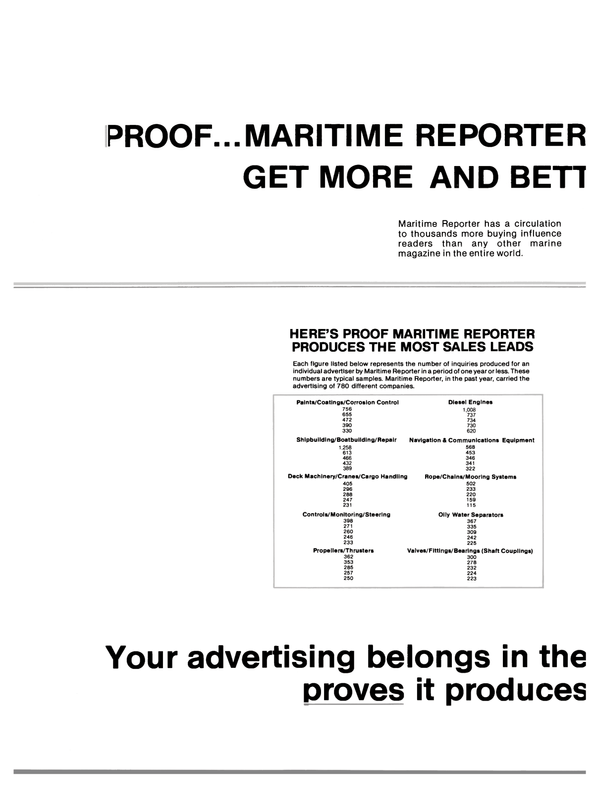
Frigate De Wert (FFG-45) Delivered Early By Bath Iron Works
The Oliver Hazard Perry Class (FFG-7) frigate program reached a milestone recently with the delivery of the USS De Wert (FFG-45) at Bath Iron Works, Bath, Maine.
She is the 36th ship of the currently approved program of 54 FFGs. Of this total, 50 are for the U.S. Navy and four are for the Royal Australian Navy.
The Guided Missile Frigate Ship Acquisition Program of the Naval Sea Systems Command is proud of its achievements with the FFG Class, and this most recent delivery is one of the reasons why. The DeWert's delivery is a new high in early deliveries for the FFG-7 Class. To this point, Bath Iron Works has delivered follow-on ships an average 13 weeks in advance of the original contract delivery dates.
The De Wert was delivered 25 weeks ahead of the original contract date.
The FFG program was initiated in 1971 to provide a new class of ocean escorts to replace World War II destroyers as they were retired from the active fleet. The large number of ships being retired created the need for a large number of ships (50) to meet the projected requirements of the 1980s. As a result, the FFG-7 Class is the largest class of surface combatant ships to be acquired since WW II.
FFGs are designed to provide protection for military and merchant ship convoys. To do this, they are capable of detecting and attacking submarines; destroying anti-ship missiles launched from enemy submarines, aircraft, or surface ships; and destroying hostile surface ships.
To accomplish her mission and at the same time to remain cost-effective, FFGs were constructed us- ing innovative design concepts.
These include modular construction techniques and the utilization of labor-saving devices to keep crew size to a minimum. Improvements in habitability—lounge areas, berthing and mess facilities— also have been incorporated in these ships.
The Perry Class has been designed to respond to threats as rapidly as possible. The propulsion system is a computer-controlled, 40,000-shp GE gas turbine power plant that can be brought on-line and made ready to operate in less than an eighth the time required for either conventional steam- or nuclear-powered ships. The combat system integrates a computerized command and decision system with the ship's sensors and weapons.
To meet potential threats, FFGs are armed with surface-toair and surface-to-surface missiles, a rapid-fire gun, ASW torpedoes, and the embarked LAMPS helicopters.
At the recent launching of USS Taylor (FFG-50) at BIW, Vice Adm.
E.B. Fowler, Commander, Naval Sea Systems Command, addressed the success of the FFG Class when he said, ". . . in firepower and antisubmarine warfare, FFGs are greatly advanced from their World War II predecessors—and with a smaller crew."
Read Frigate De Wert (FFG-45) Delivered Early By Bath Iron Works in Pdf, Flash or Html5 edition of December 15, 1983 Maritime Reporter
Other stories from December 15, 1983 issue
Content
- Upgraded Facilities Dedicated At Newfoundland Dockyard page: 6
- Raytheon Marine Names John Scott Marketing And Sales Manager, Europe page: 7
- Texas Instruments Offers Platinum-Clad Anodes For Corrosion Protection —Literature Available page: 7
- Carrington Delivers The Blackburn Cove page: 8
- Report On Navy Market Available From IMA page: 8
- Los Angeles SNAME Discusses Offshore Problems And Solutions page: 8
- New Data Sheet Analyzing Combustion Efficiency Available From Howe-Baker page: 9
- MacGregor-Navire Cargo Access Equipment Ordered For Blue Star Reefers page: 9
- Jacobs Joins Contromatics In Marketing/Sales Position page: 10
- Malcomson Named Manager Of Manufacturing For Raytheon And Sorensen page: 10
- MSC Awards $200 Million In Contracts For Four More SL-7 Conversions page: 12
- Aqua-Chem Introduces New Plate-Type Evaporator —Literature Available page: 13
- Wesmar Sonar Effective In Shallow-Water Operations —Literature Available page: 13
- Frigate De Wert (FFG-45) Delivered Early By Bath Iron Works page: 14
- Navy Rescue/Salvage Vessel Launched At Peterson Builders page: 15
- Jackup Rig For West Africa Launched At Promet Yard page: 18
- Work Progressing On USS Kalamazoo Overhaul At Hoboken Shipyards page: 18
- The 91st SNAME Annual Meeting A Special Post-Meeting And Exposition Report page: 20
- Navy Extends Contracts With COMSAT General For Use Of MARISAT page: 27
- Kockums Profit Continues With Backlog of Orders Worth SEK 4,700 Million page: 28
- Marpol/Solas Compliance Subject Of 60-Page Book Offered By Intertanko page: 28
- Harland & Wolff To Build And Market Friendship Multi-Purpose Cargo Ship page: 28
- Maritime Protection Unveils New Nitrogen Generator— Literature Available page: 29
- $30-Million Navy Contract On Landing Craft Awarded To Bell Aerospace Textron page: 30
- First Of Sulzer's New RTA Engine Series Powers Mitsubishi-Built Bulker page: 30
- American-Standard Opens New Jersey Repair Plant —Literature Available page: 31
- Gladding-Hearn Delivers Two Launches To Virginia Pilots page: 34
- Newfoundland's Windsor Cites $93 Million In New Projects page: 34
- Nylands Expands Its Diesel Spares Operations —New Catalog Available page: 35
- Newport News Shipbuilding Delivers Attack Submarine Buffalo (SSN-715) page: 36
- AOTOS Award Recipient Mario Biaggi Urges Maritime Unity page: 36
- Crane Packing Offers Brochure On New Metal Bellows Pump Shaft Seal page: 37
- Novel Hagglunds Cranes Retrofitted On Cargo Ship Built In Shanghai page: 37
- IMO Expands Its Line Of Geared Twin-Screw Pumps —Literature Available page: 38
- New Navidyne Option Reports Ship's Position In Response To Telex Call page: 38
- Epton Completes Order For Canada's Largest Marine Fenders page: 39
- Philadelphia Gear Licensed To Manufacture I Hi's Duckpeller page: 39
- Daewoo Delivers Second $80-Million Pacesetter Rig To Santa Fe Drilling page: 40
- WESMAR Presents Stability Computer To 'President Lincoln' —Literature Available page: 40
- McDermott Shipyards To Build Inter-Island Barge For Matson page: 41
- New Tunnel Thruster Model Introduced By Omnithruster page: 50
- Bell Aerospace Awarded Navy Contract For Final Phase Of Minesweeper Hunter Design page: 50


